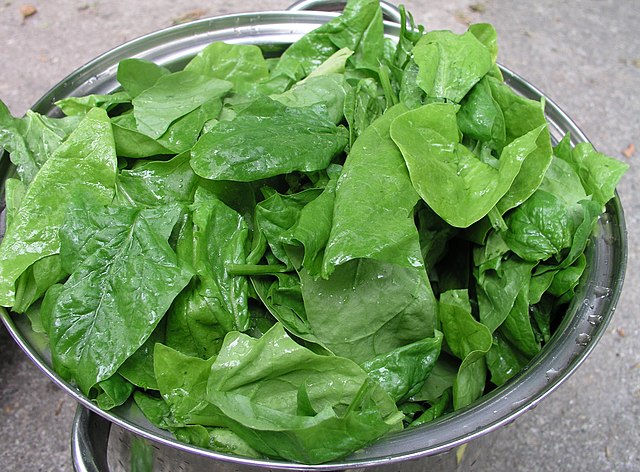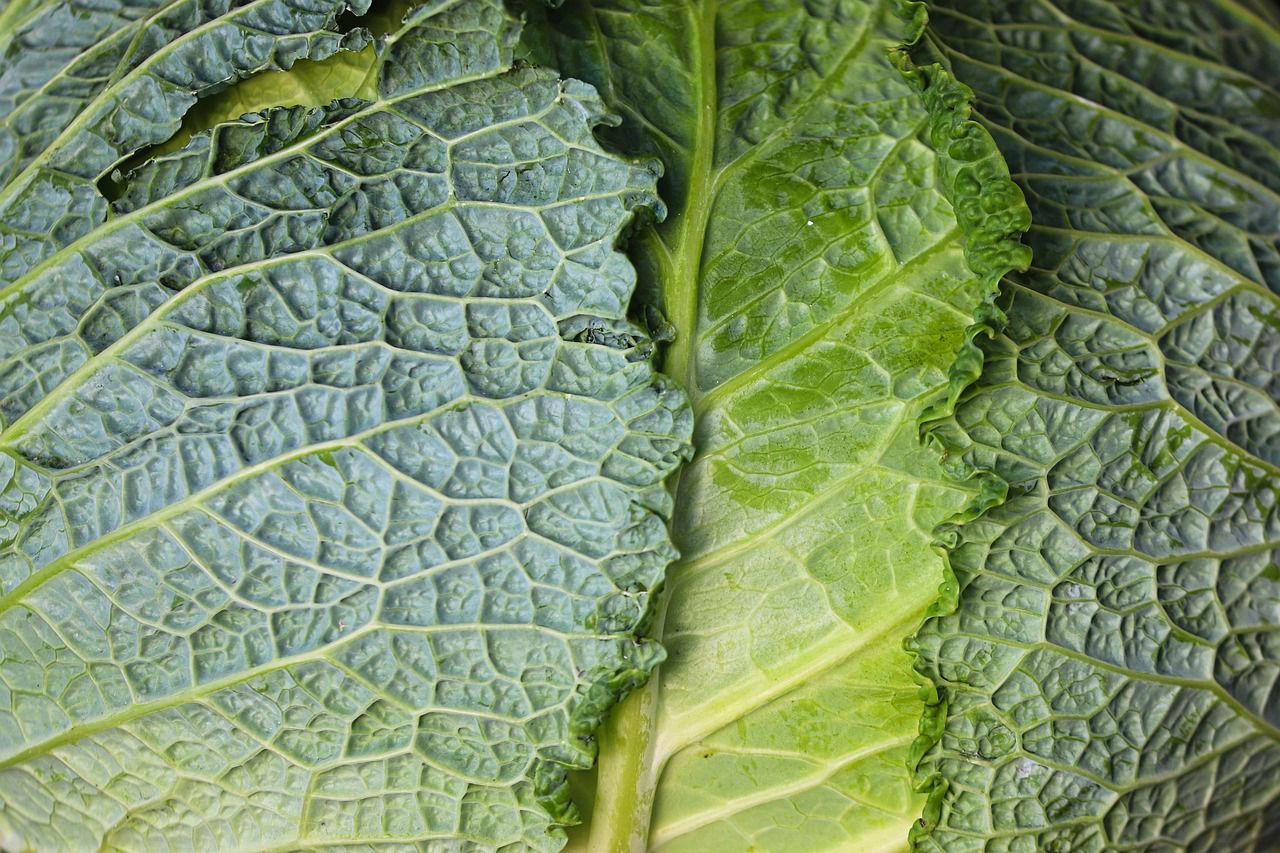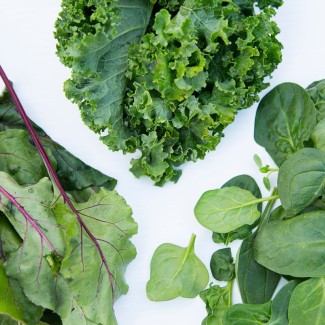Leafy greens are the unsung heroes of the vegetable kingdom, offering an array of flavors, textures, and nutritional benefits to our diets. From salads to smoothies and sautés to sandwiches, these versatile greens play a crucial role in our culinary repertoire. In this comprehensive guide, we’ll take a closer look at various leafy green varieties, each with its unique characteristics, taste profiles, and culinary uses.
The world of leafy greens is a vibrant and essential one, often overshadowed by more glamorous vegetables. Yet, these humble greens are the unsung heroes of our plates, providing an abundance of flavors, textures, and nutritional treasures that enrich our diets and culinary experiences.
A Rainbow of Choices: Leafy greens offer a kaleidoscope of options, each with its distinct personality and culinary potential. From the delicate, peppery arugula to the robust, earthy kale, there’s a leafy green for every palate and occasion. The diversity of leafy greens ensures that our meals are never monotonous, and our taste buds are continually delighted.
Nutritional Powerhouses: Beyond their flavor and versatility, leafy greens are nutritional powerhouses. They are rich in vitamins, minerals, and antioxidants, making them a crucial component of a balanced diet. From vitamin K in kale for bone health to the folate in spinach for cellular function, these greens provide a multitude of health benefits with every bite.
Versatility in the Kitchen: Leafy greens have a unique ability to seamlessly integrate into a wide range of culinary creations. They can be the star of a crisp summer salad, add depth to a hearty stew, or provide a nutrient boost to a morning smoothie. Their adaptability in the kitchen empowers chefs and home cooks to experiment with flavors, textures, and international cuisines.
Taste Profiles and Pairings: Each leafy green variety brings its own set of taste profiles to the table. Some are mild and tender, perfect for delicate salads, while others are bold and robust, ideal for sautés and stir-fries. Understanding these nuances allows us to craft dishes that balance and harmonize flavors, creating memorable meals.
Cultivating Appreciation: In this comprehensive guide, we invite you to embark on a journey through the world of leafy greens. Together, we’ll explore the unique characteristics, flavors, and culinary uses of various varieties. We’ll unlock the secrets of pairing them with ingredients that enhance their natural qualities, resulting in dishes that not only nourish the body but also tantalize the taste buds.
A Culinary Adventure: Whether you’re a seasoned chef or a home cook eager to expand your culinary horizons, leafy greens offer an exciting avenue for exploration. Their unassuming nature belies their ability to transform ordinary meals into extraordinary experiences. As we delve into the world of these unsung heroes, we’ll discover the delightful treasures that await in every leaf, and together, we’ll unlock their full culinary potential.
To expand your knowledge on this subject, make sure to read on at this location: How To Use Collard Greens In Cooking

Rich in iron, calcium, and vitamins A and K.
Rich in iron, calcium, and vitamins A and K, this nutritional powerhouse not only contributes to your overall well-being but also offers a diverse array of health benefits. Iron, essential for oxygen transport in your body, helps combat fatigue and supports healthy blood production. Calcium strengthens bones and teeth while promoting proper muscle and nerve function, contributing to long-term skeletal health.
Vitamin A, abundant in this nutrient-packed food, is crucial for maintaining healthy vision, boosting your immune system, and supporting skin health. It acts as a powerful antioxidant, helping to protect your cells from damage.
Moreover, vitamin K, another jewel in the nutritional crown, plays a vital role in blood clotting and bone metabolism, aiding in wound healing and maintaining strong, healthy bones.
Incorporating foods rich in these nutrients into your diet can have a profound impact on your health. It’s a delicious way to support your body’s essential functions and fortify your well-being, making this dietary choice a wise and beneficial one for anyone looking to prioritize their health.
For additional details, consider exploring the related content available here Leafy Greens: An A-to-Z Guide to 30 Types of Greens Plus More …

Loaded with vitamins A, C, and K, as well as antioxidants.
The nutritional profile of this remarkable vegetable goes beyond its impressive vitamin content. Bursting with vitamins A, C, and K, kale offers a symphony of antioxidants, making it a nutritional powerhouse that can greatly benefit your health.
Vitamin A: A Visionary Nutrient: Kale’s abundance of vitamin A is a boon for eye health. This essential nutrient plays a pivotal role in maintaining good vision, particularly in low-light conditions. It also contributes to healthy skin, fortifying your body’s first line of defense against environmental stressors.
Vitamin C: The Immunity Booster: Vitamin C, known for its immune-boosting properties, is another jewel in kale’s crown. It fortifies your immune system, helping your body fend off illnesses. Furthermore, it supports collagen production, promoting healthy skin and wound healing.
Vitamin K: Vital for Blood and Bones: Kale’s generous vitamin K content is essential for blood clotting, ensuring that your body can heal from injuries and surgeries. Additionally, it plays a crucial role in bone health by aiding in calcium regulation, strengthening your skeletal system.
Antioxidants: Guardians of Health: Beyond vitamins, kale boasts a wealth of antioxidants. These compounds, including beta-carotene, flavonoids, and polyphenols, are your body’s natural defenders against oxidative stress. They neutralize harmful free radicals, reducing the risk of chronic diseases and contributing to overall well-being.
Kale’s impressive vitamin content and antioxidant arsenal underscore its significance as a dietary treasure. By incorporating kale into your meals, you’re not only savoring its delicious, earthy flavor but also nourishing your body with essential nutrients that support your health and vitality. So, whether it’s in salads, smoothies, or your favorite dishes, kale has rightfully earned its place at the center of a balanced and nutritious diet.
Additionally, you can find further information on this topic by visiting this page: 18 Types of Lettuce and the Best Ways to Eat Each One | Epicurious

Sturdy leaves make it an ideal choice for wraps.
Kale’s sturdy leaves have indeed turned it into a favored choice for creating flavorful and nutritious wraps. Here’s why these robust leaves are perfect for wrapping up delicious fillings and creating satisfying meals:
1. Leafy Green Envelopes: Kale leaves serve as natural, leafy green envelopes for your wrap fillings. Their large surface area and firm texture make them an excellent substitute for traditional tortillas or flatbreads. This not only reduces the carb content of your wrap but also adds a refreshing, earthy flavor to your meal.
2. Nutrient-Rich Encasements: Wrapping your ingredients in kale leaves introduces an extra layer of nutrition to your meal. Kale is renowned for its exceptional vitamin and mineral content, including vitamin K, vitamin A, vitamin C, calcium, and iron. As you enjoy your wrap, you’re also indulging in a wealth of nutrients that support overall well-being.
3. Textural Contrast: Kale’s natural crispness adds a delightful textural contrast to your wrap. The leaves maintain their firmness, creating a satisfying crunch as you bite into your creation. This textural interplay enhances the overall dining experience, making each mouthful exciting and enjoyable.
4. Flavor Enhancement: Kale’s earthy, slightly peppery flavor complements a wide range of fillings. Whether you’re wrapping up grilled vegetables, lean proteins, or a medley of fresh ingredients, kale’s taste harmonizes with various flavor profiles, adding depth and character to your wrap.
5. Low-Calorie Option: For those looking to reduce calorie intake or incorporate more vegetables into their diet, kale wraps offer a low-calorie alternative to traditional wraps or sandwiches. You can enjoy a satisfying meal without the heaviness of excess carbs or added calories.
6. Dietary Flexibility: Kale wraps cater to dietary flexibility. Whether you follow a gluten-free, low-carb, or vegan diet, kale leaves are inclusive and adaptable. They provide a versatile platform for crafting wraps that align with various dietary preferences and restrictions.
7. Creative Customization: The beauty of kale wraps lies in their adaptability. You have the creative freedom to customize your fillings to suit your taste and dietary goals. From Mediterranean-inspired combinations with hummus and olives to Asian-inspired fillings with tofu and sesame dressing, the possibilities are endless.
In summary, kale’s sturdy leaves offer a refreshing twist on traditional wraps, enhancing both the flavor and nutrition of your meal. Whether you’re aiming for a low-calorie option, exploring dietary flexibility, or simply seeking a delightful textural contrast, kale wraps rise to the occasion. With kale, your wrap becomes not only a culinary delight but also a nutrient-rich, healthful choice that celebrates the versatility of this leafy green superstar.
If you’d like to dive deeper into this subject, there’s more to discover on this page: Best and Worst Salads for Your Health

Perfect for adding a kick to salads, pasta, and sandwiches.
Perfect for adding a kick to salads, pasta, and sandwiches, spicy mustard offers a dynamic flavor profile that tantalizes your taste buds. Its bold, zesty taste not only elevates the dish but also brings a unique twist to familiar recipes. Whether you’re looking to spice up a classic Caesar salad, give your pasta a fiery edge, or create a memorable sandwich with a spicy kick, mustard is your flavorful ally in the kitchen. The versatility of spicy mustard extends beyond its role as a condiment; it can be a secret ingredient in marinades, dressings, and glazes, enhancing the depth of flavors in your culinary creations. So, whether you’re a culinary enthusiast or a casual cook, don’t underestimate the transformative power of spicy mustard in your kitchen adventures.
Don’t stop here; you can continue your exploration by following this link for more details: Kale: Important Facts, Health Benefits, and Recipes – Relish

Abundant in vitamins A, C, and K, as well as magnesium.
Versatile; use both the colorful stems and leaves in cooking.
Sauté, steam, or use in place of spinach or kale in recipes.
Swiss chard, with its vibrant rainbow of stems and dark, glossy leaves, is a nutritional powerhouse that deserves a place in your kitchen. Its impressive nutrient content includes an abundance of vitamins A, C, and K, along with the essential mineral magnesium.
Vitamin A is crucial for maintaining healthy vision, a strong immune system, and proper cell growth. Swiss chard’s significant vitamin A content makes it a valuable addition to your diet, particularly for promoting eye health.
Vitamin C is known for its antioxidant properties, which help protect your cells from damage caused by free radicals. It’s also essential for collagen production, skin health, and immune function. Swiss chard provides a healthy dose of vitamin C, contributing to overall well-being.
Vitamin K is essential for blood clotting and bone health. Swiss chard is particularly rich in this vitamin, making it a valuable addition to your diet, especially if you want to support bone strength and cardiovascular health.
Magnesium is a mineral that plays a role in over 300 biochemical reactions in your body. It supports muscle and nerve function, maintains a steady heart rhythm, and contributes to a strong immune system. Swiss chard’s magnesium content makes it an excellent choice for overall health and vitality.
What truly sets Swiss chard apart is its versatility in the kitchen. You can make the most of this leafy green by using both its colorful stems and the tender leaves in your cooking. The stems come in an array of vibrant colors, including red, yellow, and white, and they add a delightful crunch and visual appeal to your dishes.
Swiss chard can be prepared in various ways, from sautéing to steaming. Sautéing the leaves and stems with garlic and olive oil brings out their natural sweetness and earthy flavor. Steaming Swiss chard leaves briefly retains their vibrant color and freshness while preserving their nutrients.
Additionally, Swiss chard can often be used as a versatile substitute for other greens like spinach or kale in recipes. Whether you’re making a stir-fry, a frittata, or a hearty soup, Swiss chard can easily find its place in your culinary creations.
Incorporating Swiss chard into your meals not only adds a burst of color and flavor to your dishes but also provides a wealth of essential vitamins and minerals. So, the next time you’re looking for a versatile and nutritious addition to your recipes, consider reaching for Swiss chard to elevate your culinary experience and nourish your body.
You can also read more about this here: SPECIES IDENTIFICATION GUIDE

High in vitamins A, C, and K, as well as calcium.
Traditionally used in Southern cuisine; slow-cook for tender texture.
Collard greens, with their robust nutritional profile and rich culinary history, are a beloved staple that has stood the test of time. Packed with essential vitamins and minerals, they offer a treasure trove of health benefits and a tantalizing addition to your plate.
Vitamins A, C, and K: Collard greens shine as a nutrient powerhouse. They boast high levels of vitamin A, a crucial nutrient for maintaining healthy vision, skin, and immune function. Additionally, their generous vitamin C content supports your immune system and contributes to vibrant skin. Meanwhile, vitamin K, another star in their nutritional lineup, plays a pivotal role in blood clotting and bone health. The combination of these vitamins in collard greens elevates them to a top-tier choice for nourishing your body.
Calcium: Collard greens also present an excellent source of calcium, essential for strong bones and teeth. This mineral is particularly significant for individuals seeking dairy-free calcium sources. Incorporating collard greens into your diet can help meet your calcium needs naturally.
Southern Culinary Tradition: Collard greens have a deep-rooted tradition in Southern cuisine. They have been cherished for generations, gracing dinner tables with their hearty, earthy flavors. The slow-cook method, often associated with Southern collard greens, yields a tender texture and a harmonious melding of flavors. As they simmer gently, their natural sweetness emerges, balancing the slight bitterness characteristic of leafy greens. This slow-cook technique not only enhances their taste but also preserves their nutritional value, making them a delightful and healthful addition to your meals.
Whether simmered to perfection with smoked ham hocks or infused with aromatic seasonings and spices, collard greens are a culinary canvas for creativity. They offer a canvas for culinary exploration, allowing you to tailor their flavors to your preferences and traditions.
In conclusion, collard greens are more than just a side dish; they’re a nutritional powerhouse and a symbol of culinary heritage. Embracing their abundance of vitamins, minerals, and Southern tradition can enrich your meals and enhance your well-being. So, whether you savor them in classic Southern style or experiment with innovative recipes, collard greens are a flavorful and healthful addition to your culinary repertoire.
To expand your knowledge on this subject, make sure to read on at this location: Different Types of Greens

While lower in nutrients compared to other greens, it offers a satisfying crunch.
While lower in nutrients compared to other greens, this particular leafy vegetable brings a unique quality to the table – a satisfying crunch. Sometimes, in the world of nutrition, we tend to focus solely on the vitamins and minerals, overlooking the simple pleasures and textural delights that certain foods can offer.
The crispness of this green is not to be underestimated. Its refreshing crunch can add a delightful contrast to salads, sandwiches, and wraps. It’s the perfect component to introduce a satisfying bite into a dish that might otherwise lack that satisfying texture. The crunch also plays a sensory role, contributing to the overall eating experience and making your meal more enjoyable.
Moreover, the mild and neutral flavor of this green makes it an ideal canvas for a variety of dressings, seasonings, and toppings. Its ability to absorb flavors means you can turn it into a culinary masterpiece with a simple drizzle of olive oil and balsamic vinegar, a sprinkle of your favorite spices, or a handful of toasted nuts and seeds. In this way, it becomes a versatile ingredient that complements a wide range of flavor profiles.
While it may not boast the same nutrient density as its leafy counterparts, its contribution to your diet should not be underestimated. It can still provide valuable vitamins and minerals, especially when combined with other nutrient-rich foods. And let’s not forget the psychological aspect of eating – the joy and satisfaction derived from the texture and taste of our meals can be just as important to our overall well-being as the nutrients themselves.
In conclusion, while this particular leafy green may not be a nutritional heavyweight, it has a valuable role to play in our diets. Its satisfying crunch, versatility in the kitchen, and ability to enhance the overall dining experience make it a worthy addition to our plates. After all, food isn’t just about nourishing our bodies; it’s also about delighting our senses and bringing enjoyment to our daily lives.
If you’d like to dive deeper into this subject, there’s more to discover on this page: Leafy Greens: An A-to-Z Guide to 30 Types of Greens Plus More …

Refreshing and hydrating due to its high water content.
“Water, the elixir of life, plays a fundamental role in keeping our bodies refreshed and well-hydrated. When it comes to hydration, few foods can compare to the natural wonders found in fruits like watermelon. Here’s why watermelon is not only a delicious summertime treat but also a hydration hero:
Hydration in Every Bite: Watermelon is aptly named, with a water content that hovers around 90%. This means that with every juicy bite, you’re not just enjoying a burst of refreshing flavor; you’re also replenishing your body’s water levels. This makes it an excellent choice for staying hydrated, especially during hot summer days.
Electrolyte Balance: Hydration isn’t just about water; it’s also about maintaining the right balance of electrolytes in your body. Watermelon contains essential electrolytes like potassium, which helps regulate fluid balance, nerve function, and muscle contractions. So, it’s not just about quenching your thirst; it’s about ensuring your body functions optimally.
A Natural Source of Vitamins: Beyond its hydrating properties, watermelon offers a range of essential vitamins, such as vitamin C and vitamin A. These nutrients support overall health, boost your immune system, and contribute to healthy skin and vision.
Rich in Antioxidants: Watermelon also contains antioxidants like lycopene, a pigment responsible for its vibrant red color. Lycopene is known for its potential health benefits, including reducing the risk of chronic diseases and protecting cells from damage caused by free radicals.
Low in Calories: Another perk of watermelon is that it’s low in calories, making it a guilt-free choice for those watching their calorie intake. You can enjoy generous portions without worrying about excessive caloric intake.
Versatile Hydration: Whether you’re enjoying watermelon in its pure, juicy form or using it as a base for hydrating smoothies and refreshing salads, its versatility allows you to incorporate it into a variety of dishes and beverages. You can even freeze watermelon chunks for a cooling, hydrating snack on scorching summer afternoons.
Natural and Delicious: Perhaps the most important aspect of watermelon’s hydration contribution is that it’s naturally delicious. Staying hydrated becomes a pleasure when you can indulge in the sweet, juicy goodness of watermelon.
So, when you reach for a slice of watermelon, know that you’re not just enjoying a delectable fruit; you’re also giving your body a hydrating boost. It’s a reminder that nature has its own way of nourishing and refreshing us, one juicy bite at a time.”
Explore this link for a more extensive examination of the topic: 18 Types of Lettuce and the Best Ways to Eat Each One | Epicurious

Packed with vitamins A, C, and K, as well as antioxidants.
A staple in Southern cuisine, often sautéed or used in stews.
The nutritional prowess of sweet potatoes goes far beyond their delightful taste and vibrant orange hue. These root vegetables are like nature’s multivitamin, offering an array of essential nutrients and health benefits.
Let’s start with vitamin A, where sweet potatoes truly shine. A single serving provides a staggering amount of this crucial vitamin, delivering well over 100% of your daily recommended intake. Vitamin A is essential for maintaining healthy vision, a robust immune system, and glowing skin. It’s also an antioxidant, meaning it helps combat oxidative stress and reduce the risk of chronic diseases.
But the nutritional goodness doesn’t end there. Sweet potatoes are also rich in vitamin C, an immune-boosting antioxidant that supports collagen production, aids in wound healing, and contributes to overall skin health. It’s a vitamin that shines in its ability to fortify your body’s defenses.
Vitamin K, another key player in sweet potatoes, plays a vital role in blood clotting and bone health. It ensures your body can efficiently repair wounds and maintain strong bones, keeping you on the path to overall wellness.
Antioxidants, such as beta-carotene and quercetin, are also abundant in sweet potatoes. These compounds help neutralize free radicals, reducing inflammation and lowering the risk of chronic diseases like heart disease and cancer.
Now, let’s talk culinary versatility. While sweet potatoes are a staple in Southern cuisine, they’re incredibly adaptable and can find a place in a wide range of dishes worldwide. Roasted, mashed, or baked, their sweet and slightly earthy flavor can be showcased in both savory and sweet preparations.
In the South, you’ll often find sweet potatoes sautéed to caramelized perfection, creating a delightful contrast of crispy edges and creamy interiors. They’re also frequent stars in hearty stews, where their natural sweetness adds depth and richness to the flavors.
Beyond the American South, sweet potatoes are celebrated in cuisines around the globe. In Asian dishes, they appear in soups and stir-fries, adding a unique touch to traditional recipes. Their natural sweetness makes them a versatile ingredient in baking as well, gracing everything from pies to cookies with their delicious flavor.
In conclusion, sweet potatoes are much more than a beloved Southern staple. They’re a nutritional powerhouse, brimming with vitamins and antioxidants that promote health and well-being. Whether you enjoy them sautéed, stewed, roasted, or baked, sweet potatoes add a touch of sweetness and a wealth of nutrients to your culinary adventures. Embrace their versatility and savor the delicious benefits they bring to your table.
Explore this link for a more extensive examination of the topic: TREASURE VALLEY TREE SELECTION GUIDE

Rich in vitamins A, C, and K, as well as iron and calcium.
Ideal for adding a bold, peppery flavor to salads and sandwiches.
With its impressive nutritional profile, arugula is a must-add to your daily diet. Bursting with vitamins A, C, and K, this leafy green also provides essential minerals like iron and calcium. But arugula offers much more than just health benefits; it’s a culinary treasure that can elevate your dishes to new heights.
The distinct, peppery flavor of arugula is what sets it apart in the world of greens. Its bold taste adds a zesty kick to salads and sandwiches, making your meals burst with flavor. The combination of its slightly bitter edge and peppery notes creates a delightful contrast that pairs well with a wide range of ingredients.
In salads, arugula can be the star of the show or a supporting player, depending on your preference. Its vibrant green color and unique taste add depth to mixed greens, and it works wonderfully with ingredients like sweet fruits, creamy cheeses, and crunchy nuts. Drizzle with a simple vinaigrette, and you have a salad that’s as tasty as it is nutritious.
For sandwiches, arugula offers a refreshing alternative to traditional lettuce. Its peppery bite provides a burst of flavor that complements everything from turkey and avocado to grilled chicken and roasted vegetables. It’s an easy way to add a gourmet touch to your everyday sandwiches.
Beyond salads and sandwiches, arugula can be used in a variety of dishes. Toss it into pasta for a peppery pasta salad, add it to omelets for an extra layer of taste, or sprinkle it over pizza just before serving for a fresh, vibrant touch.
Whether you’re seeking to boost your nutrient intake or enhance the flavor of your meals, arugula is a versatile and delicious choice. Its bold, peppery character can awaken your taste buds and elevate even the simplest dishes to culinary excellence. So, the next time you’re in the kitchen, reach for some arugula and let its distinctive flavor take your cooking to the next level.
To expand your knowledge on this subject, make sure to read on at this location: Different Types of Greens

Offers vitamins A, C, and K, as well as calcium and fiber.
Popular in Asian cuisine; stir-fry, sauté, or steam for a tender-crisp texture.
Both the leaves and stems are edible and versatile.
Unlock the treasure trove of nutrition that bok choy offers, making it a culinary gem that can elevate your meals and support your well-being. Packed with essential vitamins such as A, C, and K, this leafy green powerhouse also delivers a dose of calcium and dietary fiber.
Vitamins Galore: Bok choy stands tall as a vitamin-rich vegetable. Vitamin A, essential for healthy vision and skin, supports your overall well-being. Vitamin C, a potent antioxidant, strengthens your immune system while aiding in collagen production for radiant skin. Vitamin K plays a vital role in blood clotting and bone health, ensuring your body functions optimally.
A Versatile Delight: Bok choy’s versatility in the kitchen is a chef’s dream. Its unique structure offers a tender-crisp texture, making it perfect for stir-frying, sautéing, or steaming. Whether you’re crafting a flavorful stir-fry, a nutritious side dish, or a vibrant salad, bok choy’s adaptable nature allows it to absorb a medley of flavors and elevate any culinary creation.
Edible from Leaf to Stem: The beauty of bok choy lies not only in its leaves but also in its succulent stems. Both parts of this vegetable are entirely edible and contribute distinct textures and flavors to your dishes. The leaves are tender and slightly peppery, while the stems offer a satisfying crunch. This duality allows you to experiment with different culinary techniques, expanding your repertoire in the kitchen.
A Staple in Asian Cuisine: Bok choy’s popularity extends far beyond its nutritional value. It has secured a prominent place in Asian cuisine, enriching a wide array of dishes. From savory stir-fries to comforting soups and broths, bok choy infuses its unique taste and texture into traditional and modern Asian recipes alike. Its presence in these culinary traditions speaks to its timeless appeal.
A Dietary Ally: Beyond its culinary merits, bok choy aligns with dietary goals. Its fiber content supports digestive health, promoting regular bowel movements and a sense of fullness. This can be particularly beneficial for those aiming to maintain a healthy weight or manage their calorie intake.
In conclusion, bok choy’s rich nutritional profile and culinary adaptability make it a prized addition to your diet. With vitamins A, C, and K, along with calcium and fiber, it offers a wholesome package of nutrients. Whether you’re exploring Asian cuisine or seeking to elevate your everyday meals, bok choy invites you to savor its unique flavors and textures while supporting your well-being. So, embrace this leafy green marvel in your kitchen, and let it take your culinary creations to new heights of taste and nutrition.
For a comprehensive look at this subject, we invite you to read more on this dedicated page: Leafy Greens: An A-to-Z Guide to 30 Types of Greens Plus More …

Leafy greens bring a world of flavor and nutrition to your table. Whether you’re looking to boost your vitamin intake, add a zesty kick to your dishes, or simply enjoy the satisfying crunch of fresh greens, there’s a leafy green variety to suit your palate and dietary needs. So, the next time you’re at the grocery store or planning your garden, consider experimenting with different leafy greens to elevate your culinary creations and nourish your body.
The realm of leafy greens is a treasure trove waiting to be explored, offering a multitude of flavors and nutritional benefits to enhance your meals and well-being. These versatile greens are like culinary chameleons, capable of transforming your dishes in myriad ways to meet your specific dietary preferences and cravings.
Vitamins Galore: Leafy greens are a veritable vitamin bonanza. If you’re aiming to fortify your diet with essential nutrients, look no further. Spinach is teeming with vitamin K, perfect for bone health, while vitamin C-rich kale supports your immune system. Meanwhile, the vibrant hues of red and green lettuces are indicative of their vitamin A content, essential for vision and skin health. By incorporating a variety of leafy greens into your meals, you can craft a nutrient-rich symphony on your plate.
Flavorful Accents: If you’re seeking to infuse your dishes with vibrant and zesty flavors, leafy greens have you covered. The peppery arugula adds a delightful bite to salads, while mustard greens impart a bold, tangy note to stir-fries. Swiss chard offers a slightly earthy sweetness, and watercress delivers a delightful peppery punch. With these greens at your disposal, you can turn ordinary recipes into culinary adventures that tantalize your taste buds.
Crunchy Satisfaction: Sometimes, all you crave is the satisfying crunch of fresh greens. Leafy greens like romaine lettuce, iceberg lettuce, and endive are your go-to choices for achieving that crisp texture. Whether as a base for a hearty salad or as a refreshing wrap for your favorite fillings, these greens provide a satisfying crunch that elevates your dining experience.
Tailored to Your Needs: Leafy greens are incredibly versatile, and there’s a variety to cater to your specific dietary needs. If you’re watching your calorie intake, opt for low-calorie greens like spinach and kale. For those on a low-carb diet, leafy greens are a staple. And if you’re seeking to increase your fiber intake, greens like collard greens and Swiss chard are excellent choices. No matter your dietary goals, leafy greens can be tailored to fit your regimen.
A World of Exploration: The next time you embark on a grocery store adventure or plan your garden, consider leafy greens as your culinary companions. Experimenting with different varieties not only adds excitement to your meals but also nourishes your body in unique ways. These greens are the key to elevating your culinary creations, introducing new flavors, and expanding your palate. So, whether you’re a seasoned chef or a kitchen novice, embrace the world of leafy greens and let them infuse your dishes with both health and flavor.
Should you desire more in-depth information, it’s available for your perusal on this page: Sprouts and Microgreens—Novel Food Sources for Healthy Diets …
More links
For a comprehensive look at this subject, we invite you to read more on this dedicated page: Ultimate Guide to Leafy Greens
